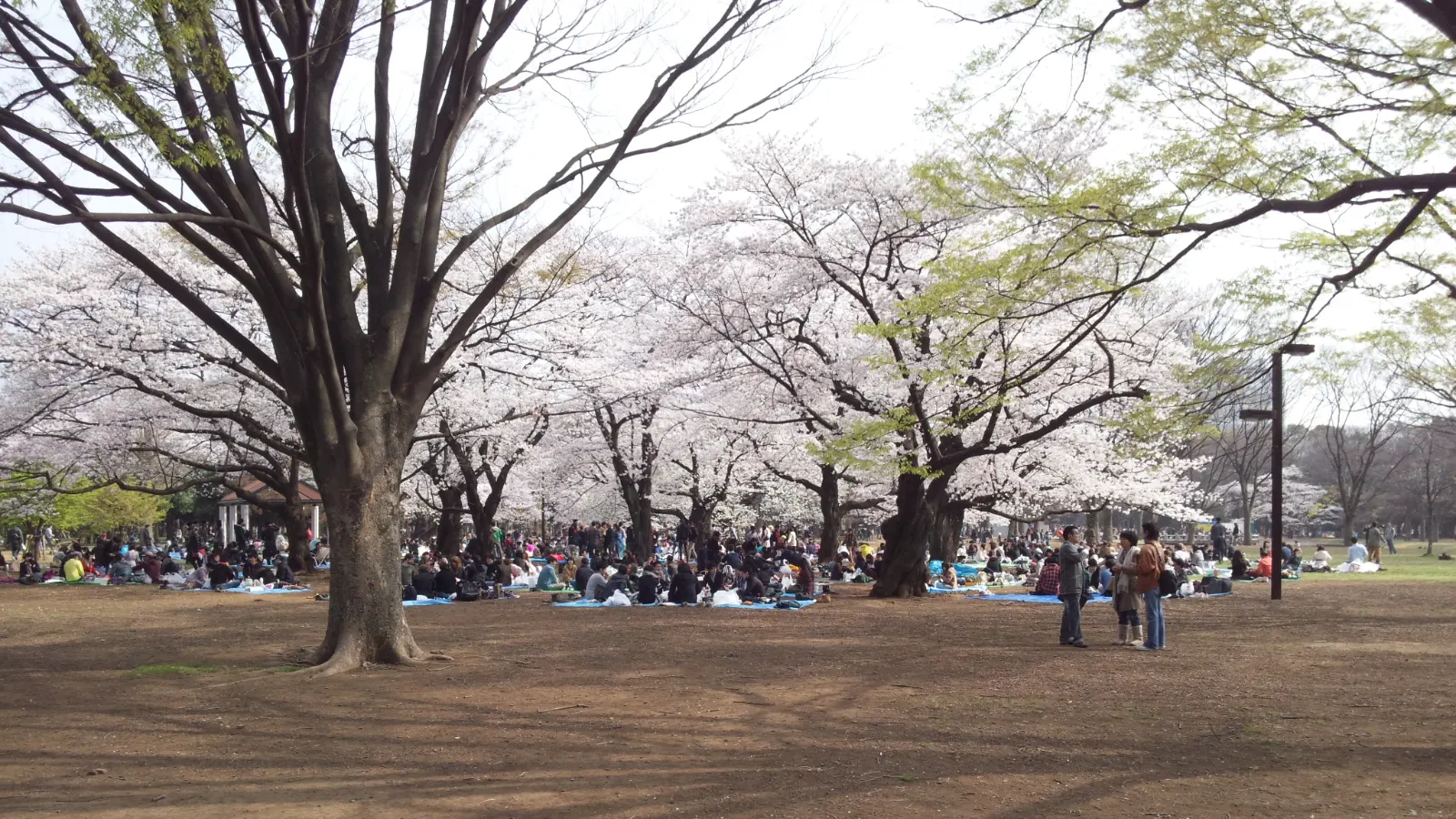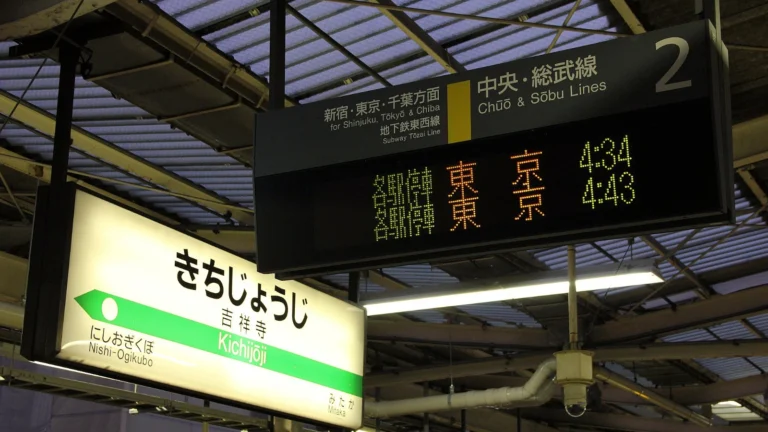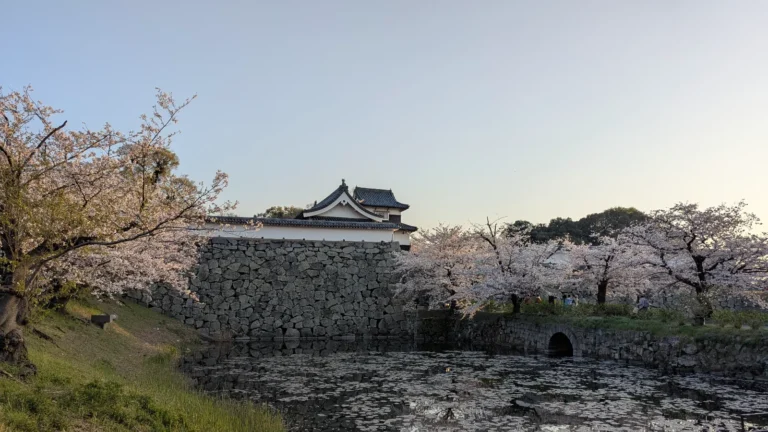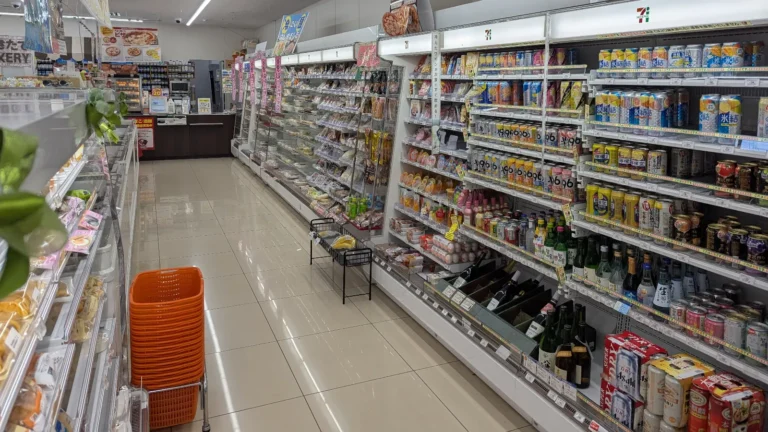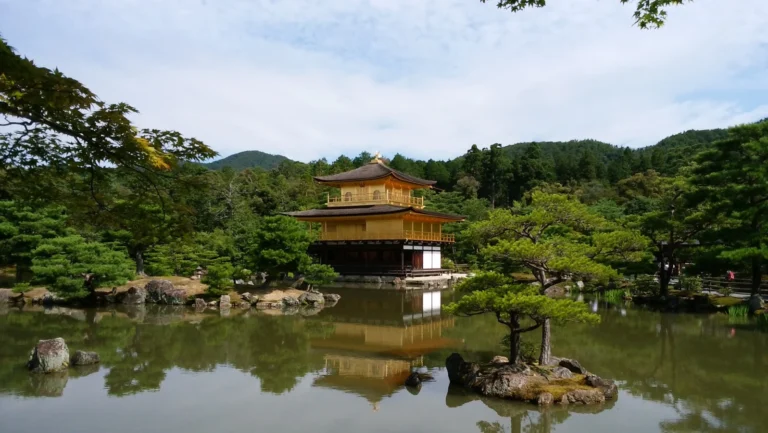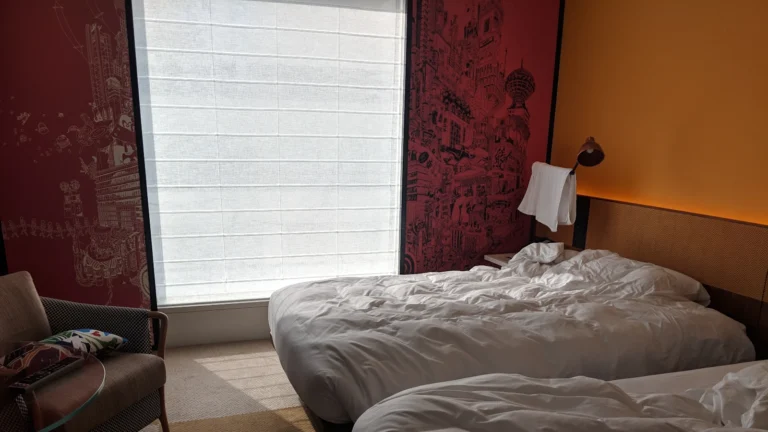Tokyo, Kyoto, or Osaka: A JOTM Guide
If you’re planning your first trip to Japan and wondering where to go, you’ll quickly find that Tokyo, Kyoto, and Osaka are at the top of every list of the best cities to visit in Japan. But how do you decide which to explore first? This guide offers a clear comparison, helping you weigh the options in the classic Tokyo vs Kyoto vs Osaka debate. Whether you’re after neon-lit excitement, timeless temples, or vibrant street food scenes, our insights will help you choose the right destination and make the most of your time in Japan’s essential travel triangle.
Select links in this guide are affiliate links. They help sustain this space… allowing us to share more, with less dependence on advertising.
*Prices are subject to change.
Quick Comparison: Tokyo, Kyoto, and Osaka at a Glance
Tokyo
- Personality: Fast-paced, creative, layered
- Highlights: Senso-ji, Shibuya, Harajuku, Odaiba, Yanaka
- Best For: First-timers, urban explorers, pop culture fans
- Must-Try Food: Sushi, ramen, wagashi
- Ease of Access: 2 airports, shinkansen hub
Kyoto
- Personality: Tranquil, historic, elegant
- Highlights: Kiyomizu-dera, Fushimi Inari, Arashiyama, Gion
- Best For: Culture lovers, couples, slow travel, nature
- Must-Try Food: Kaiseki, yudofu, matcha sweets
- Ease of Access: Shinkansen from Tokyo/Osaka
Osaka
- Personality: Friendly, bold, playful
- Highlights: Dotonbori, Osaka Castle, Shinsekai, Kuromon Market
- Best For: Foodies, families, nightlife, shopping
- Must-Try Food: Takoyaki, okonomiyaki, kushikatsu
- Ease of Access: Shinkansen/Kansai Airport
Tokyo: The Energy of Innovation and Tradition
Why Visit Tokyo
Tokyo is Japan at its most dynamic. It’s a place where centuries-old shrines sit beside glass towers and each neighborhood feels like its own city. Travelers love Tokyo for its mix of tradition and technology, art and pop culture, calm gardens and buzzing nightlife.
Best Neighborhoods in Tokyo to Explore
- Shibuya & Shinjuku: Neon, shopping, entertainment, and the city’s famous scramble crossing.
- Asakusa: Historic heart with Senso-ji Temple, traditional streets, and street food.
- Harajuku & Omotesando: Trendy fashion, youth culture, and tree-lined avenues.
- Yanaka & Ueno: Old Tokyo charm, quiet lanes, and excellent museums.
- Odaiba: Futuristic island with interactive attractions, views, and shopping.
Unforgettable Experiences in Tokyo
- Watch Tokyo’s skyline from the Park Hyatt or Tokyo Skytree.
- Discover hidden shrines and local coffee shops in Yanaka.
- Explore quirky museums (Ghibli Museum, teamLab Planets).
- Eat your way through Tsukiji Outer Market and try a sushi breakfast.
Cultural Highlights Unique to Tokyo
- Explore Akihabara’s anime, manga, and gaming subcultures, or experience Tokyo’s vibrant street fashion in Harajuku.
- Visit themed cafes, from owl cafes to robot restaurants, for only-in-Tokyo adventures.
- Try a hands-on sushi-making class or attend a sumo wrestling tournament (seasonal).
Where to Stay in Tokyo
- Luxury: Park Hyatt Tokyo (city views), Mandarin Oriental Tokyo (Nihonbashi elegance)
- Boutique: Trunk(HOTEL) Cat Street (stylish, walkable), Hotel K5 (artsy, central)
- Traditional: Hoshinoya Tokyo (modern ryokan), Yuen Bettei Daita
Discover our curated Tokyo Hotel Guide for stays that suit every style and neighborhood.
Best Day Trips from Tokyo
- Hakone: Onsen, art museums, and Mt. Fuji views (1.5 hours by train).
- Nikko: UNESCO shrines and waterfalls (2 hours by train).
- Kamakura: Giant Buddha, seaside temples (1 hour by train).
- Yokohama: Waterfront city, Cup Noodles Museum (30 min by train).
JOTM’s Insider Tips for Tokyo
- Grab a Suica/Pasmo card for seamless transit.
- Visit early morning for temples/gardens; enjoy nightlife in Shibuya or Ebisu.
- Don’t be afraid to get lost, Tokyo’s safest treasures are often off the main path.
- If using trains, avoid rush hour (7:30–9:30 am and 5–7 pm) for a more relaxed experience, especially in major stations like Shinjuku or Tokyo Station.
- Consider a Tokyo Subway Ticket for unlimited metro rides, or the JR Tokyo Wide Pass if you plan regional day trips by train.
- The Klook Pass Greater Tokyo can bundle major attractions at a discount.
Kyoto: Timeless Temples and Tranquility
Why Visit Kyoto
If you dream of temples, lantern-lit lanes, and traditional Japan, Kyoto is where you’ll find it. Once the imperial capital, Kyoto is filled with serene gardens, atmospheric neighborhoods, and more than 1,600 temples and shrines.
Key Districts and What to See in Kyoto
- Gion & Higashiyama: Geisha culture, tea houses, and the iconic streets of old Kyoto.
- Arashiyama: Bamboo grove, riverside walks, and mountain views.
- Fushimi Inari: Famous for its thousands of red torii gates up the mountainside.
- Central Kyoto: Nijo Castle, Nishiki Market, modern art museums.
- Northern Kyoto: Kinkaku-ji (Golden Pavilion), peaceful Daitoku-ji temples.
Best Things to Do in Kyoto
- Visit Kiyomizu-dera or Fushimi Inari before 8am for peaceful photos.
- Walk the Philosopher’s Path, especially in cherry blossom season.
- Try a traditional kaiseki meal or matcha sweets at a riverside café.
- Rent a bike for scenic rides between temples.
Traditional Experiences Unique to Kyoto
- Join a traditional tea ceremony or try Zen meditation in a temple.
- Rent a kimono for a day and stroll through Gion; learn proper etiquette for spotting maiko and geiko.
- Take a workshop in kyo-yaki pottery, yuzen dyeing, or Japanese sweets making.
Where to Stay in Kyoto
- Luxury: The Mitsui Kyoto (garden luxury), Park Hyatt Kyoto
- Boutique: Sowaka (machiya-inspired, Gion), The Shinmonzen (art-filled)
- Ryokan: Nazuna Kyoto Higashi Honganji, Seikoro Ryokan
Find where tradition meets comfort in our handpicked Kyoto Hotel Guide.
Best Day Trips from Kyoto
- Nara: Friendly deer, Todai-ji temple (45 min by train).
- Uji: Matcha culture, Byodo-in Temple (20 min by train).
- Himeji: Japan’s most famous castle (1 hour by train).
- Mount Hiei: Sacred mountain temples (1 hour by train and cable car).
JOTM’s Insider Tips for Kyoto
- Use the Kyoto City Bus Pass for efficient sightseeing.
- Book temples and museums in advance during peak seasons.
- Be respectful, quiet voices and slow pace are appreciated in sacred areas.
- The Kyoto/Osaka Sightseeing Pass covers key private rail lines and can be a great value for temple-hopping.
- The Kansai Railway Pass or Hankyu Tourist Pass are also popular for exploring Kyoto and neighboring cities.
- For those planning trips to Nara, Osaka, or the Ise-Shima area, the Kintetsu Rail Pass offers unlimited rides on the Kintetsu Railway network.
Osaka: Food, Fun, and a Bold Local Spirit
Why Visit Osaka
Osaka is Japan’s friendliest big city, famous for its food, humor, and easygoing locals. The atmosphere is bold but laid-back, perfect for travelers looking to eat well and experience Japanese hospitality at its most unfiltered.
Top Neighborhoods and Sights in Osaka
- Dotonbori & Namba: Lively canals, neon lights, endless street food.
- Umeda: Shopping, views from Umeda Sky Building, and transport hub.
- Shinsekai: Retro charm, kushikatsu eateries, Tsutenkaku Tower.
- Osaka Castle: Historic landmark, surrounded by a large city park.
Best Experiences in Osaka
- Taste takoyaki and okonomiyaki along Dotonbori at night.
- Wander Kuromon Market for fresh seafood and local snacks.
- Visit Sumiyoshi Taisha, one of Japan’s oldest Shinto shrines.
- Take a day trip to Universal Studios Japan or nearby Nara/Kobe.
Cultural Highlights Unique to Osaka
- Experience Osaka’s famous manzai (comedy) shows or catch a Hanshin Tigers baseball game at Koshien Stadium.
- Dive into a street food tour focusing on the kui-daore (eat till you drop) spirit.
- Explore Kuromon Market with a local guide, or find a hidden jazz bar for late-night music.
Where to Stay in Osaka
- Luxury: Conrad Osaka (river views), The St. Regis Osaka
- Boutique: Hotel Noum (calm riverside), quirky hostels in Namba
- Ryokan: Kaneyoshi Ryokan (tatami by the river), Hotel Sunroute Plaza Shinsaibashi
Explore the best places to stay with our Osaka Hotel Guide, from riverside ryokan to modern high-rises.
Best Day Trips from Osaka
- Kobe: Harbor, sake breweries (30 min by train).
- Himeji: Historic castle (1 hour by train).
- Koyasan: Buddhist temples, cemetery walks (2 hours by train and cable car).
- Nara: Ancient capital, parks (45 min by train).
JOTM’s Insider Tips for Osaka
- Try local dialect and jokes, Osakans are famous for their sense of humor.
- Metro and JR lines are easy; get an ICOCA card for cashless travel.
- Stay near Namba or Umeda for the best access to food and nightlife.
- The Osaka Amazing Pass offers unlimited subway rides plus entry to top attractions, ideal for first-time visitors.
- The Kyoto/Osaka Sightseeing Pass and Kansai Railway Pass make it easy to combine Osaka with Kyoto or Nara.
- The Kintetsu Rail Pass is a cost-effective option for unlimited travel on Kintetsu lines, ideal if you plan day trips from Osaka to Nara, Kyoto, or even Ise.
JOTM’s Practical Guide
How to Travel Between Tokyo, Kyoto, and Osaka
The Tokaido Shinkansen line connects all three cities:
- Tokyo to Kyoto: ~2 hr 15 min
- Kyoto to Osaka: 15 min
- Tokyo to Osaka: ~2 hr 30 min
- A Japan Rail Pass is ideal if traveling to all three within a week.
Navigate Japan with confidence using our How to Get Around Japan guide and discover if the Japan Rail Pass is right for your journey in our dedicated Rail Pass guide.
When to Visit Tokyo, Kyoto, and Osaka
- Spring: Cherry blossoms (late March–early April), mild weather.
- Autumn: Vivid foliage (mid-November), clear skies.
- Summer: Lively festivals, hot and humid.
- Winter: Quieter, good for temples and hot springs, mild in Osaka/Tokyo.
Plan around cherry blossoms, autumn leaves, and more with our Best Time to Visit Japan guide.
How Many Days to Spend in Tokyo, Kyoto, and Osaka
- Tokyo: 3–5 days (more for day trips)
- Kyoto: 2–4 days (longer for slow travel)
- Osaka: 2–3 days (plus day trips)
Which City Is Best for You: Tokyo, Kyoto, or Osaka?
- Tokyo: First-time visitors, city lovers, families, culture fans.
- Kyoto: Couples, tradition-seekers, photographers, slow travelers.
- Osaka: Foodies, families, nightlife lovers, social travelers.
Map out your journey from first idea to final booking with our Planning a Trip to Japan guide. Unlock smart ways to save with our Essential Tips for Traveling Japan on a Budget guide.
FAQs about Tokyo, Kyoto, and Osaka: A Few Last Things Before You Go
If you’re comparing Tokyo, Kyoto, and Osaka or planning your first trip, these are the most common questions travelers ask about the best cities to visit in Japan.
A: For first-time travelers to Japan, Tokyo is the best city to visit. It offers unparalleled international access, a vast array of modern attractions, and an efficient transportation system, making it an ideal starting point for exploring the country.
A: Yes, it is very easy to travel between Tokyo, Kyoto, and Osaka. The cities are connected by the Tokaido Shinkansen (bullet train), which offers fast, comfortable, and frequent service, making it simple to visit all three in one trip.
A: The best time to visit Tokyo, Kyoto, and Osaka is during spring (late March to early April) for cherry blossoms or autumn (November) for vibrant fall colors. Both seasons offer comfortable weather, scenic landscapes, and seasonal festivals, making them the most popular times for travelers.
A: Most travelers typically allocate the following number of days for each city:
– Tokyo: 3 to 5 days
– Kyoto: 2 to 4 days
– Osaka: 2 to 3 days
This allows sufficient time to explore main attractions and enjoy local experiences or day trips from each location.
A: The main differences between Tokyo, Kyoto, and Osaka are:
– Tokyo: Japan’s modern, bustling capital, characterized by its urban energy, diverse neighborhoods, and cutting-edge trends.
– Kyoto: Renowned for its rich history, traditional culture, and an abundance of ancient temples, shrines, and geisha districts.
– Osaka: Known as Japan’s food capital, offering a vibrant street food scene, lively nightlife, and a more relaxed, approachable atmosphere.
A: Yes, all three cities are excellent bases for day trips. From Tokyo, visit Hakone or Nikko; from Kyoto, try Nara or Uji; from Osaka, consider Kobe, Himeji, or Nara.
A: Generally, Osaka is more affordable for accommodation and dining compared to Tokyo and Kyoto, making it a good choice for budget travelers.
A: Osaka is often considered Japan’s food capital, famous for street food like takoyaki and okonomiyaki. Tokyo offers a wide variety of international and Japanese cuisine, including world-class sushi. Kyoto specializes in traditional kaiseki and matcha-based sweets.
A: Yes, IC cards like Suica, Pasmo, and ICOCA work seamlessly across trains, subways, and buses in all three cities.

